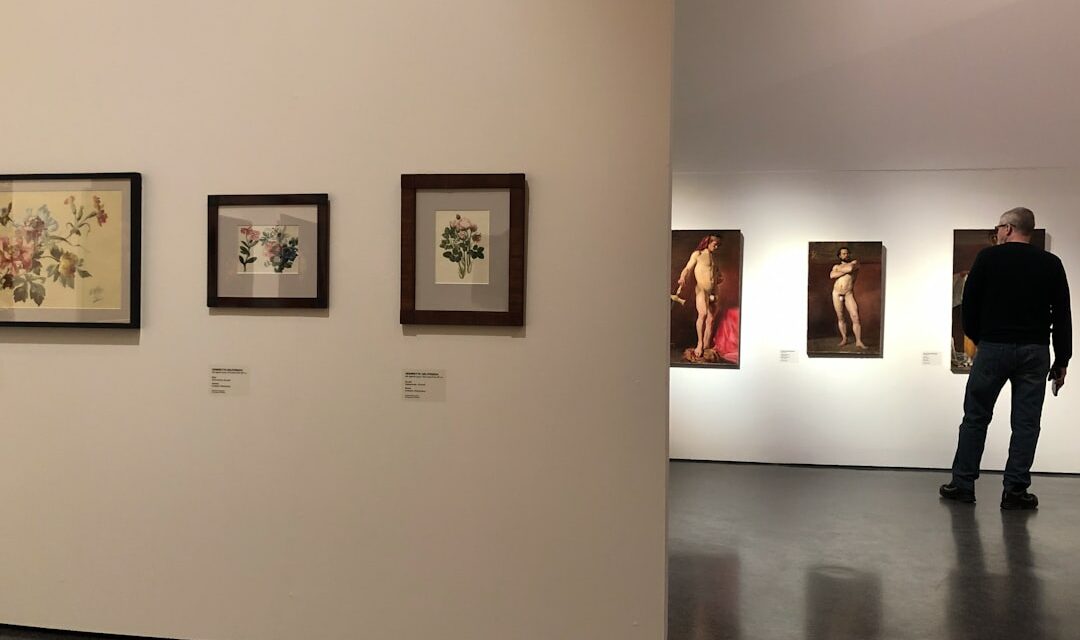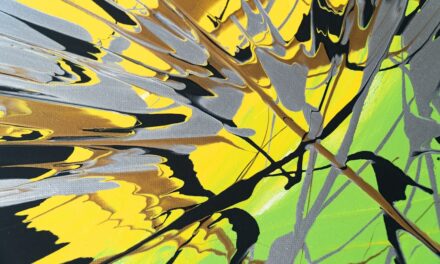The Museo Nacional de Artes Visuales (MNAV) in Montevideo, Uruguay, has a rich and storied history that reflects the evolution of the nation’s artistic identity. Established in 1911, the museum was born out of a desire to create a national repository for the visual arts, showcasing the works of Uruguayan artists and providing a platform for cultural expression. The initiative was spearheaded by a group of intellectuals and artists who recognised the need for a dedicated space to celebrate and preserve the nation’s artistic heritage.
The museum’s founding was a significant milestone in Uruguay’s cultural landscape, as it marked the first time that a formal institution was created to house and promote the visual arts. In its early years, the MNAV faced numerous challenges, including limited funding and a lack of public awareness. However, it gradually gained recognition and support, particularly after the appointment of notable directors who were instrumental in expanding its collection and outreach.
The museum’s first significant acquisition was a collection of works by the prominent Uruguayan painter Joaquín Torres García, which laid the groundwork for what would become an extensive and diverse collection. Over the decades, the MNAV has evolved into a vital cultural institution, reflecting not only the artistic trends of Uruguay but also broader movements in Latin American art.
Summary
- The Museo Nacional de Artes Visuales was founded in 1911 and is the oldest museum in Uruguay dedicated to visual arts.
- The museum’s collection includes over 7,000 works of art, including paintings, sculptures, and photographs, with a focus on Uruguayan and Latin American artists.
- The museum’s building was designed by architect Julio Vilamajó and is considered a masterpiece of modernist architecture in Uruguay.
- The museum hosts temporary exhibitions featuring both national and international artists, as well as thematic exhibitions highlighting specific art movements or periods.
- The museum offers educational programs for all ages, including guided tours, workshops, and lectures, aimed at promoting art appreciation and understanding.
Collection of the Museo Nacional de Artes Visuales
Uruguayan Art: A National Treasure
The museum is particularly celebrated for its extensive collection of Uruguayan art, which includes masterpieces from the late 19th century to contemporary works. Among the most celebrated artists represented in the collection are Joaquín Torres García, who is often regarded as one of Uruguay’s most influential figures in modern art, and his protégé, Rafael Barradas. Their works exemplify the unique blend of European influences and local themes that characterise Uruguayan art.
A Global Perspective
In addition to its focus on national artists, the MNAV also houses significant pieces from international artists, providing visitors with a broader context for understanding the evolution of visual arts. The collection includes works by renowned figures such as Pablo Picasso, Henri Matisse, and Salvador Dalí, showcasing how these artists have influenced and interacted with their Uruguayan counterparts.
A Bridge Between Cultures
The museum’s commitment to preserving and exhibiting both local and international art allows it to serve as a bridge between cultures, fostering an appreciation for diverse artistic expressions.
Architecture of the Museo Nacional de Artes Visuales
The architectural design of the Museo Nacional de Artes Visuales is as noteworthy as its collection. The building itself is an elegant example of early 20th-century architecture, combining neoclassical elements with modernist influences. Designed by architect Juan Zorrilla de San Martín, the museum was inaugurated in 1930 and has since become an iconic landmark in Montevideo.
Its façade features grand columns and expansive windows that invite natural light into the exhibition spaces, creating an inviting atmosphere for visitors. Inside, the layout of the museum is thoughtfully designed to enhance the viewing experience. The galleries are spacious and well-lit, allowing for optimal display of artworks while providing visitors with ample room to engage with each piece.
The museum has undergone several renovations over the years to improve accessibility and modernise facilities without compromising its historical integrity. These updates have included the addition of new exhibition spaces and educational areas, ensuring that the MNAV remains a dynamic environment for both art appreciation and learning.
Exhibitions at the Museo Nacional de Artes Visuales
The MNAV is renowned for its diverse range of exhibitions that cater to various interests and artistic movements. The museum regularly hosts temporary exhibitions that highlight specific themes or artists, providing fresh perspectives on both historical and contemporary art. These exhibitions often feature works from both local and international artists, fostering dialogue between different artistic traditions.
For instance, exhibitions focusing on contemporary Uruguayan artists have been particularly successful in showcasing emerging talent while connecting them to global art trends. In addition to thematic exhibitions, the MNAV also organises retrospectives that celebrate the contributions of significant figures in Uruguayan art history. These retrospectives often include a comprehensive selection of an artist’s work, allowing visitors to gain insight into their creative evolution and impact on the art scene.
The museum’s commitment to curating high-quality exhibitions ensures that it remains a vital cultural hub in Montevideo, attracting both locals and tourists alike who seek to engage with the visual arts.
Educational programs at the Museo Nacional de Artes Visuales
The educational programs at the Museo Nacional de Artes Visuales play a crucial role in fostering an appreciation for art among diverse audiences. The museum offers a variety of workshops, guided tours, and lectures aimed at different age groups and skill levels. These programs are designed not only to educate participants about the artworks on display but also to encourage creative expression through hands-on activities.
For example, workshops may involve painting or drawing sessions inspired by the museum’s collection, allowing participants to explore their artistic potential. Moreover, the MNAV collaborates with schools and universities to develop tailored educational initiatives that align with academic curricula. These partnerships enable students to engage with art in meaningful ways, enhancing their understanding of cultural history and artistic techniques.
By providing access to expert-led discussions and interactive experiences, the museum cultivates a deeper connection between students and the visual arts, ensuring that future generations appreciate and value this important aspect of cultural heritage.
Visitor information for the Museo Nacional de Artes Visuales
Getting There and Opening Hours
For those planning a visit to the Museo Nacional de Artes Visuales, essential information is readily available to ensure a smooth experience. The museum is conveniently located in Parque Rodó, making it easily accessible by public transport or on foot from various parts of Montevideo. Opening hours typically run from Tuesday to Sunday, allowing ample opportunity for visitors to explore its extensive collection and exhibitions.
Admission and Amenities
Admission fees are generally modest, with discounts available for students and seniors, reflecting the museum’s commitment to making art accessible to all. Upon arrival, visitors can take advantage of various amenities designed to enhance their experience. The museum features a well-stocked gift shop offering art-related books, prints, and souvenirs that allow guests to take a piece of their visit home with them.
Guided Tours and Refreshments
Additionally, there are café facilities where visitors can relax and reflect on their experience over refreshments. For those interested in guided tours, advance booking is recommended to ensure availability, particularly during peak tourist seasons when interest in cultural attractions tends to surge.
Events and activities at the Museo Nacional de Artes Visuales
The Museo Nacional de Artes Visuales hosts a vibrant array of events and activities throughout the year that cater to diverse interests within the community. These events often include artist talks, panel discussions, and film screenings that delve into various aspects of visual culture. Such activities not only enrich visitors’ understanding of art but also foster a sense of community among art enthusiasts.
For instance, events featuring local artists discussing their work provide invaluable insights into their creative processes while encouraging dialogue between artists and audiences. In addition to these intellectual pursuits, the MNAV also organises family-friendly activities designed to engage younger audiences. Special events such as family days or holiday workshops allow children to explore their creativity through interactive art-making sessions inspired by the museum’s collection.
These initiatives are crucial in nurturing an early appreciation for art among children while providing families with opportunities to bond over shared creative experiences.
Impact and significance of the Museo Nacional de Artes Visuales
The impact of the Museo Nacional de Artes Visuales extends far beyond its walls; it plays a pivotal role in shaping Uruguay’s cultural identity and promoting artistic dialogue within Latin America. As one of the foremost institutions dedicated to visual arts in Uruguay, it serves as a vital platform for both established and emerging artists. By showcasing local talent alongside international works, the MNAV fosters an environment where diverse artistic expressions can thrive and be appreciated by a broad audience.
Furthermore, the museum’s educational initiatives contribute significantly to cultural literacy within society. By engaging with schools and communities through workshops and outreach programs, it helps demystify art and encourages individuals from all backgrounds to explore their creative potential. This commitment to accessibility ensures that art remains an integral part of public life in Uruguay, reinforcing its importance as a means of communication and cultural exchange.
Through its multifaceted approach to art curation, education, and community engagement, the Museo Nacional de Artes Visuales continues to be a cornerstone of Uruguay’s cultural landscape.
If you are interested in exploring different art movements, you may also enjoy reading An Introduction to Art Deco. This article delves into the history and characteristics of the Art Deco style, which emerged in the early 20th century and influenced various forms of art and design. Discover how this elegant and geometric aesthetic continues to inspire artists and designers today.




